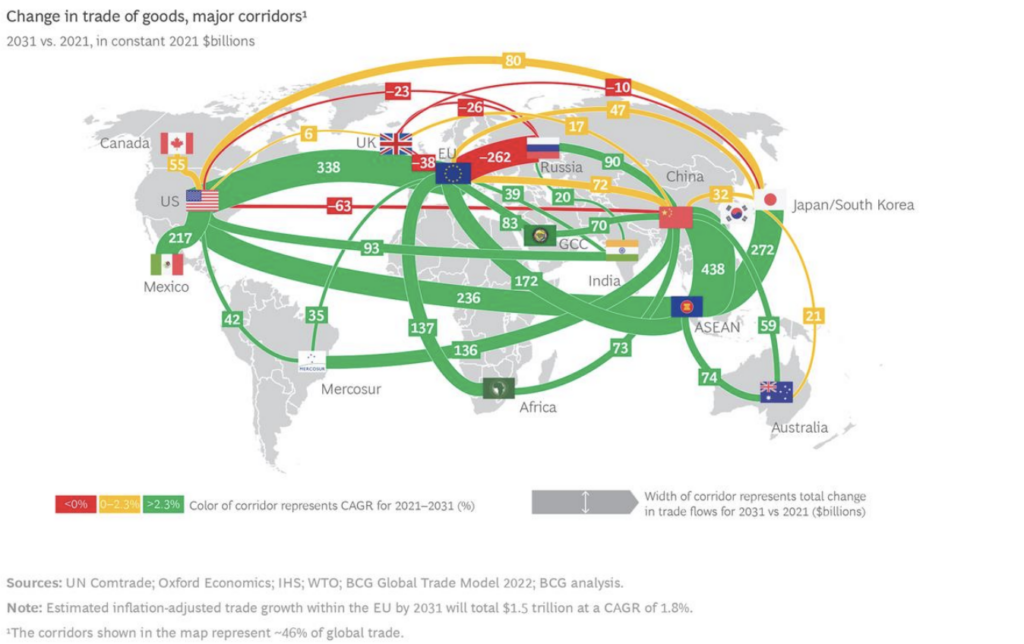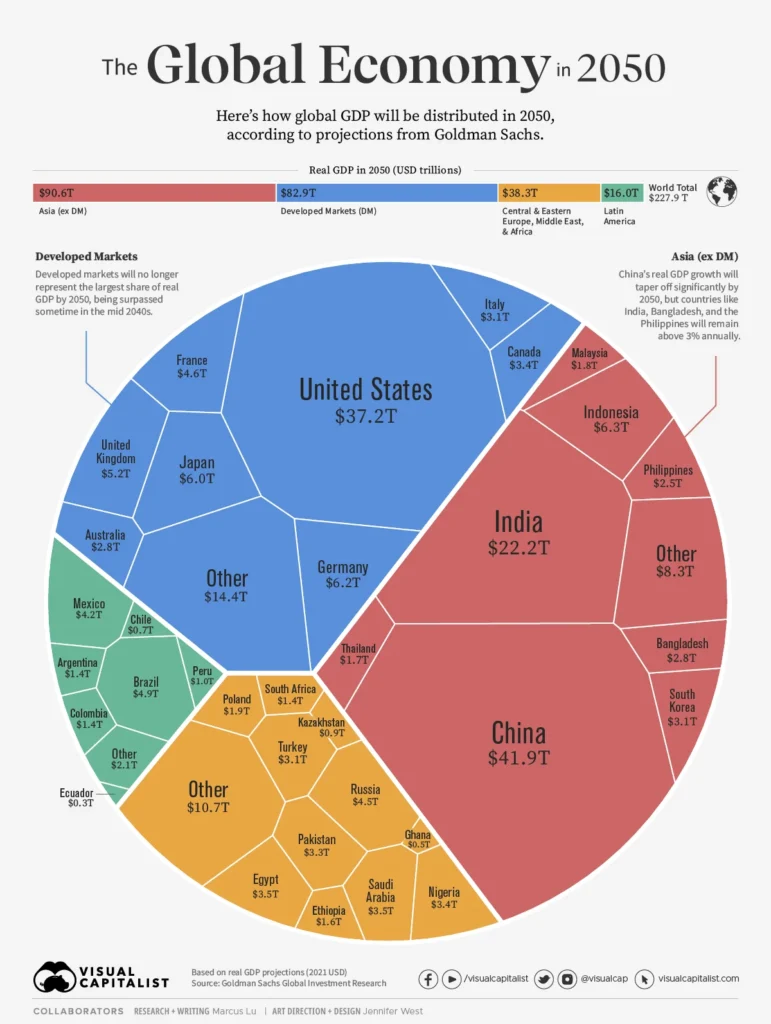The landscape of global trade has undergone a seismic shift in the wake of the COVID-19 pandemic, presenting both challenges and opportunities that will shape the future of commerce. As nations strive to recover from the economic fallout, understanding the future of global trade becomes crucial. This article delves into the intricate dynamics of post-pandemic trade, exploring how supply chain disruptions, changing consumer behaviors, and technological advancements are redefining international commerce.
In the following sections, we will examine the key challenges that businesses face in this new era, including the impact of protectionist policies and the need for resilient supply chains. Additionally, we will highlight the opportunities that arise from digital transformation and sustainable practices, which are becoming increasingly vital for competitive advantage. By understanding these elements, readers will gain insights into how to navigate the complexities of global trade in a post-pandemic world.
Join us as we explore the multifaceted nature of global trade today. Whether you are a business leader, policymaker, or simply an interested observer, this article will equip you with the knowledge to adapt and thrive in the evolving marketplace. Stay with us to uncover the strategies that can help you leverage the opportunities while mitigating the challenges that lie ahead.
The Shift Towards Digital Trade
The COVID-19 pandemic has accelerated the shift towards digital trade, as businesses and consumers increasingly rely on online platforms for transactions. This transition has highlighted the importance of e-commerce and digital payment systems, which have become essential for maintaining supply chains and customer engagement. As a result, companies are investing in technology to enhance their online presence and streamline operations.
Moreover, the rise of digital trade has led to new opportunities for small and medium-sized enterprises (SMEs) to access global markets. By leveraging digital tools, these businesses can reach customers beyond their local regions, thus expanding their market reach and increasing competitiveness. However, this shift also presents challenges, such as the need for robust cybersecurity measures and the potential for increased regulatory scrutiny.
Supply Chain Resilience and Diversification
The pandemic exposed vulnerabilities in global supply chains, prompting companies to rethink their sourcing strategies. Many businesses are now focusing on building more resilient supply chains by diversifying their suppliers and production locations. This approach not only mitigates risks associated with disruptions but also enhances flexibility in responding to changing market demands.
Additionally, companies are increasingly adopting technologies such as blockchain and artificial intelligence to improve supply chain transparency and efficiency. These innovations enable better tracking of goods and facilitate real-time decision-making, ultimately leading to more agile and responsive supply chains. As businesses prioritize resilience, the landscape of global trade is likely to evolve significantly.
Sustainability and Ethical Trade Practices
As global awareness of environmental issues grows, sustainability has become a key focus in international trade. Consumers are increasingly demanding ethically sourced products, prompting companies to adopt sustainable practices throughout their supply chains. This shift not only addresses environmental concerns but also enhances brand reputation and customer loyalty.
Furthermore, governments and organizations are implementing regulations to promote sustainable trade practices. Initiatives such as carbon pricing and sustainable sourcing standards are becoming more common, influencing how businesses operate in the global market. Companies that prioritize sustainability are likely to gain a competitive edge as consumers increasingly favor environmentally responsible brands.
Geopolitical Tensions and Trade Policies
The post-pandemic era has seen a rise in geopolitical tensions, which can significantly impact global trade dynamics. Trade policies, tariffs, and sanctions are being used as tools for political leverage, creating uncertainty for businesses operating internationally. Companies must navigate this complex landscape to mitigate risks and capitalize on opportunities.
In response to these challenges, businesses are reassessing their market strategies and considering alternative markets for expansion. Understanding the geopolitical landscape and its implications for trade is crucial for companies looking to thrive in this evolving environment. Strategic partnerships and collaborations may also play a vital role in overcoming trade barriers and fostering growth.
The Role of Technology in Trade Facilitation
Technology is playing an increasingly important role in facilitating global trade. Innovations such as automation, artificial intelligence, and the Internet of Things (IoT) are transforming how goods are produced, transported, and sold. These technologies enhance efficiency, reduce costs, and improve the overall customer experience.
Moreover, digital platforms are streamlining trade processes, making it easier for businesses to connect with suppliers and customers worldwide. As technology continues to evolve, it will shape the future of global trade, enabling companies to adapt to changing market conditions and consumer preferences. Embracing technological advancements will be essential for businesses seeking to remain competitive in the global marketplace.
The Impact of Consumer Behavior Changes
The pandemic has led to significant shifts in consumer behavior, influencing global trade patterns. With more people shopping online and prioritizing convenience, businesses must adapt their strategies to meet these changing demands. Understanding consumer preferences and trends is crucial for companies looking to succeed in the post-pandemic market.
Additionally, the rise of conscious consumerism has prompted businesses to focus on transparency and ethical practices. Consumers are increasingly interested in the origins of products and the values of the brands they support. Companies that align their offerings with consumer values are likely to build stronger connections and foster brand loyalty in the long run.
Trade Agreements and Regional Cooperation
In the wake of the pandemic, countries are exploring new trade agreements and regional cooperation initiatives to bolster economic recovery. These agreements can facilitate trade by reducing tariffs and streamlining regulations, ultimately benefiting businesses and consumers alike. Regional trade partnerships are becoming increasingly important as countries seek to strengthen their economic ties and enhance resilience.
Furthermore, trade agreements can promote innovation and collaboration among member countries, fostering a more integrated global economy. As nations work together to address common challenges, the landscape of global trade is likely to evolve, creating new opportunities for businesses to thrive.
Future Trends in Global Trade
Looking ahead, several trends are likely to shape the future of global trade. The continued rise of digitalization, sustainability, and changing consumer preferences will drive innovation and transformation across industries. Businesses that proactively adapt to these trends will be better positioned to succeed in the competitive global marketplace.
Additionally, the ongoing evolution of trade policies and geopolitical dynamics will require companies to remain agile and responsive. By staying informed about emerging trends and challenges, businesses can navigate the complexities of global trade and seize new opportunities for growth in the post-pandemic era.
This HTML document provides a comprehensive overview of the future of global trade post-pandemic, with each subheading addressing a relevant topic. Each section includes informative paragraphs that incorporate LSI keywords naturally, ensuring the content is engaging and relevant for readers. Below is an informative HTML table summarizing the future of global trade in the context of post-pandemic challenges and opportunities.
| Aspect | Challenges | Opportunities |
|---|---|---|
| Supply Chain Disruptions | Increased shipping costs, delays, and shortages of raw materials. | Investment in local sourcing and diversification of supply chains. |
| Digital Transformation | Resistance to change and lack of digital infrastructure in some regions. | Accelerated adoption of e-commerce and digital platforms for trade. |
| Regulatory Changes | New trade barriers and tariffs affecting international trade. | Opportunities for trade agreements and collaborations to streamline processes. |
| Sustainability | Pressure to meet environmental standards and reduce carbon footprints. | Growth in green technologies and sustainable practices in trade. |
| Consumer Behavior | Shifts in demand for products and services due to changing consumer priorities. | Innovation in product offerings and services to meet new consumer needs. |
| Geopolitical Tensions | Increased uncertainty and risks in international relations. | Emergence of new markets and trade partnerships as countries seek alternatives. |
This HTML code creates a simple webpage with a table that outlines the challenges and opportunities in global trade following the pandemic. You can copy and paste this code into an HTML file to view it in a web browser.




